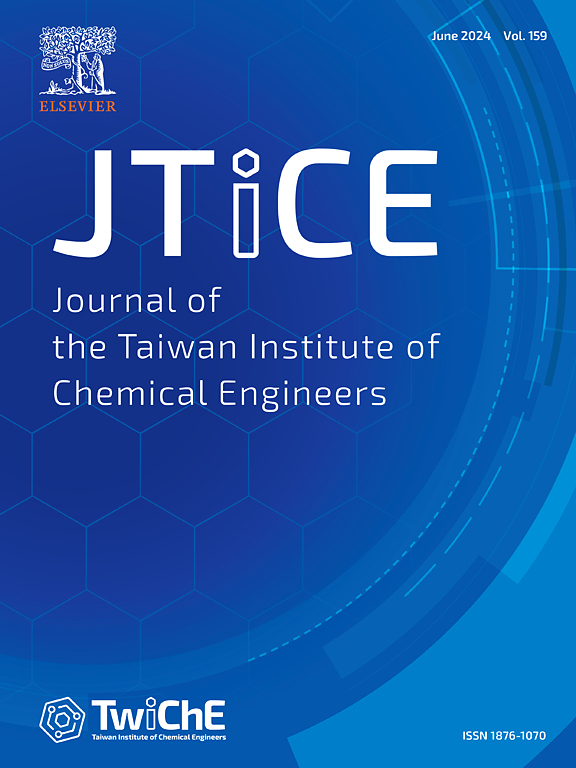Azithromycin resistance genes in clinically-isolated Escherichia coli and their relationship with those from wastewater
IF 5.5
3区 工程技术
Q1 ENGINEERING, CHEMICAL
Journal of the Taiwan Institute of Chemical Engineers
Pub Date : 2025-01-01
DOI:10.1016/j.jtice.2024.105549
引用次数: 0
Abstract
Background
Due to the limited information on azithromycin-resistant E. coli and the difficulty in finding a reliable surveillance source for antibiotic resistance (AR) data, this study aimed to investigate the characteristics of such isolates in clinical samples and their correlation with wastewater isolates.
Methods
Samples were collected from a hospital in Iran over a six-month period and analysed for resistant E. coli, multiple antibiotic resistance (MAR), azithromycin resistance genes (AzRGs), phylogroups, and molecular types and compared with the corresponding parameters in wastewater isolates.
Significant findings
Isolates separated from the clinical setting were resistant to all antibiotics tested, from 5 % to 80 %, of which 95 % had MAR values > 0.2. The mph(A), erm(B), and ere (A) genes were prominent with a prevalence of 100 %, 69.2 % and 2.5 %, respectively, most of them in groups D (52.5 %) and A (42.5 %). The characteristics of the isolates showed a close correlation with those from municipal wastewater (P values for: Mean resistance prevalence = 0.71, MAR = 0.836, AzRGs = 0.134 and phylogenetic analysis = 0.39). This confirms that measuring AR levels in E. coli from wastewater environments may be representative of the corresponding levels in community.
临床分离的大肠埃希菌中的阿奇霉素耐药基因及其与废水中耐药基因的关系
本文章由计算机程序翻译,如有差异,请以英文原文为准。
求助全文
约1分钟内获得全文
求助全文
来源期刊
CiteScore
9.10
自引率
14.00%
发文量
362
审稿时长
35 days
期刊介绍:
Journal of the Taiwan Institute of Chemical Engineers (formerly known as Journal of the Chinese Institute of Chemical Engineers) publishes original works, from fundamental principles to practical applications, in the broad field of chemical engineering with special focus on three aspects: Chemical and Biomolecular Science and Technology, Energy and Environmental Science and Technology, and Materials Science and Technology. Authors should choose for their manuscript an appropriate aspect section and a few related classifications when submitting to the journal online.

 求助内容:
求助内容: 应助结果提醒方式:
应助结果提醒方式:


